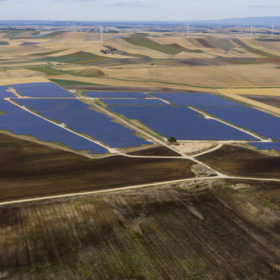Italy’s largest PV project comes online

A 103 MW solar park built by Danish developer European Energy has been connected to the grid after a year of construction work. The project had been started in 2011 and at one stage appeared doomed, when a national feed-in tariff program ended.
Danish PV project developer European Energy has announced the completion of a 103 MW solar plant in Troia, in the southern Italian region of Apulia. “More than 400 people were involved in the construction and others will operate and maintain the activity during the 30-year lifecycle of the plant,” said European Energy chief executive Knud Erik Andersen.
The plant features 275,000 “latest generation” solar modules from an unnamed manufacturer. Construction took around a year, the company said, without disclosing further technical or financial project details.
The plant was under a legal requirement to be finalized this month after the Regional Administrative Court of Apulia responded to a petition by the developer to reinstate approval for the project, conceding 17 months to get it connected to the grid.
The project is expected to sell power through a bilateral power purchase agreement. European Energy in January last year announced it had secured a 12-year agreement from the Axpo Italia local unit of the Swiss electric utility for Axpo to buy 300 MW of solar power. “The length and the price of the agreement ensures bankability, which will allow us to realize substantial parts of our Italian project pipeline,” said CEO Andersen at the time, adding most of the projects concerned were in Apulia and Sicily.
European Energy in February last year acquired the ASI Troia FV1, special purpose company which owns the Troia project. The plant had been approved by Apulia’s regional government in 2011, when the Conto Energia feed-in tariff program was still running. When that incentive scheme closed, the project appeared doomed. However, with unsubsidized, grid-parity solar becoming viable in Italy in the last two years, interest in large scale projects has revived.

